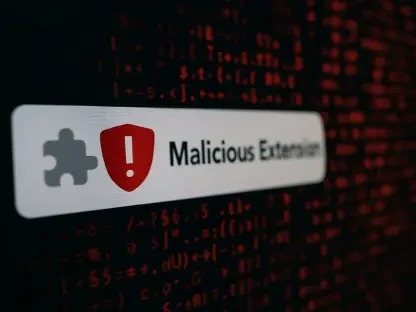Over the last couple of years, there has been a significant increase in the number of ransomware attacks impacting organizations of all industries and sizes. To define ransomware, it is a type of malware that ‘employs encryption to hold a victim’s information at ransom.’ This means that individuals are no longer able to access their data and must pay a ransom fee in order to retrieve their stolen files.
Ransomware is continuously growing in both scale and sophistication, which we have seen much evidence of in 2021. According to the Verizon Data Breach Investigations Report, ransomware accounts for 10% of all breaches, and ‘doubled in frequency in 2021.’ In addition, IDC’s 2021 Ransomware Study noted that 37% of organizations have reported being a victim of a ransomware attack of some kind this year.
Facilitating this rise in malicious attacks are the recent changes in how we work. Many employees now work remotely or in a hybrid capacity. According to Optec, this increases vulnerability, ‘as your team is likely using a range of personal devices and insecure connections.’ It can therefore be all too easy for a cybercriminal to hack into your valuable networks and systems. Another way that organizations can make it easy for attackers is their reliance on legacy systems and outdated security strategies. Optec agrees that modern ransomware attacks are ‘capable of bypassing and even exploiting traditional best practices in cybersecurity.’
So as we head into 2022, it’s more important than ever to ensure your business is equipped with an effective security strategy. McAfee has predicted that ransomware attacks will become increasingly more complex in 2022. But while ransomware has proven to be a very prevalent threat to business security, it can certainly be stopped in its tracks with the right solution. This is backed up by Gartner research, which claims that over 90% of ransomware attacks can be prevented.
So just how exactly can you protect your business from ransomware in 2022? Let’s have a look at a few tried and tested strategies:
Zero-Trust
A zero-trust security model requires all users to be authenticated before being able to access an organization’s network and data. Tech Republic confirms that zero-trust is a ‘valuable defense mechanism in blocking ransomware’ as it works on a ‘never trust, always verify’ principle. And according to a report from Symmetry Systems and Osterman Research, ‘zero trust architecture is expected to increase cybersecurity efficacy by 144%’.
Extended Detection and Response (XDR)
XDR is highly effective against ransomware as it provides higher visibility into threats. According to Cisco, XDR ‘collects and correlates data across email, endpoints, servers, cloud workloads, and networks’ which allows teams to analyze, identify and resolve threats to avoid devastating data loss and security breaches. Optec agrees that XDR plays an instrumental role in stopping ransomware before it fully infects your network, saving your business as a result.
Two-Factor Authentication (2FA) or Multi-Factor Authentication
According to PDQ.com, 2FA or MFA ‘should become a non-negotiable security measure adopted by all organizations.’ 2FA and MFA increase the number of steps and credentials that users need to verify their identity before being granted access to an account. This significantly enhances account security and mitigates the risk of cyber attacks.
Software-Defined Wide-Area Networking (SD-WAN)
SD-WAN provides vital security protection, particularly for the hybrid workforce. According to Six Degrees, organizations are able to manage the increase in potential attack surfaces by ‘accessing security functionality through SD-WAN without deploying more equipment. This enables them to deliver security to the network edge without deploying more hardware.’ Through SD-WAN, employees are able to achieve the same level of security as they would have in the office.
Backing Up Your Data and Systems
As ransomware attacks have increased, backing up your data and systems has become essential. PDQ stresses that ‘one of the only successful methods of recovering data that has been encrypted with ransomware is by restoring it from a backup.’ They also note the importance of segmenting data backups to ensure they can’t be encrypted. ComputerWeekly.com agrees that ‘the key to being able to avoid ransomware demands is to have robust and well-tested backups.’ This involves regularly reviewing and updating your backup policies and implementing ‘air gap backups’ to provide extra protection.
Providing Cyber Security Training
Carrying out awareness training for your employees is vital to ensuring they correctly follow best security practices. Often, employees pose a significant security risk to organizations. From a report by IBM, over 95% of security incidents were due to some form of human error. But with frequent and appropriate training, ransomware attacks can be vastly reduced or completely prevented.
Ransomware doesn’t discriminate, so it’s important to start preparing your business now to avoid the risks of a crippling attack.








